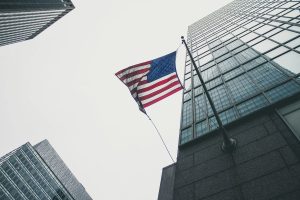Sustainable construction initiatives are reshaping the built environment, offering a greener and more eco-friendly approach to development. However, navigating the financial aspects of these projects can be complex, with unique challenges and opportunities. This article will delve into the financial landscape, address the challenges and solutions for financing, discuss contractual considerations, explore stakeholder roles, and examine how to monitor and report financial performance effectively in the realm of sustainable construction.
Key Takeaways
- Understanding the cost implications and long-term financial benefits of sustainable materials and practices is crucial for effective budgeting.
- Identifying and leveraging incentives, grants, and other financial support mechanisms can significantly reduce the upfront costs of eco-friendly construction.
- Proactive financial management, including risk allocation and dispute resolution strategies, is essential for maintaining project viability and preventing budget overruns.
- The success of sustainable construction projects often hinges on the collaboration between various stakeholders, including investors, developers, contractors, and the community.
- Implementing robust cost control strategies and transparent reporting systems is key to tracking the financial performance and ensuring the sustainability of construction investments.
Understanding the Financial Landscape of Sustainable Construction
Cost Analysis of Green Building Materials
The shift towards sustainable construction is not just an environmental choice but an economic one. Cost analysis is crucial in understanding the true value of green building materials. These materials often come with a higher upfront cost but can lead to significant savings over the lifecycle of a building.
- Initial purchase price
- Long-term maintenance costs
- Energy efficiency savings
- Potential increase in property value
The lifecycle cost analysis should encompass all phases from acquisition to disposal, highlighting the economic benefits of sustainable materials beyond the purchase price.
Understanding the full spectrum of costs associated with green materials allows for informed decision-making. It’s about balancing short-term expenditures with long-term gains, ensuring that the investment in sustainability pays off.
Budgeting for Long-Term Sustainability
Sustainable construction demands foresight. Budgeting for long-term sustainability is not just about initial costs; it’s an investment in the future. Consider the lifecycle expenses, from energy savings to maintenance costs.
Lifecycle cost analysis is crucial. It goes beyond the sticker price, factoring in durability, efficiency, and the cost of potential upgrades. Here’s a snapshot:
| Year | Initial Cost | Maintenance | Energy Savings |
|---|---|---|---|
| 1 | $$$$ | $$ | $$ |
| 5 | $$$$ | $$$ | $$$$ |
| 10 | $$$$ | $$$$ | $$$$$$ |
Sustainable budgeting aligns with eco-friendly goals. It’s not just about the green—it’s about being green.
Remember, the true value of sustainability emerges over time. Plan for the long haul, and your investment will pay dividends in both financial and environmental returns.
Incentives and Grants for Eco-Friendly Construction
Harnessing incentives and grants is a game-changer for sustainable construction projects. Governments and institutions offer financial boosts to projects that meet green criteria, reducing initial costs and encouraging eco-friendly practices.
- Research available local and federal grants
- Understand eligibility requirements
- Apply early and follow up diligently
Leveraging these financial instruments can significantly offset the upfront investment in sustainability.
It’s not just about the money; it’s about aligning with a greener future. Incentives often come with support networks, providing access to expertise and a community of like-minded professionals. Effective budget management and diverse financing options are crucial for electrical contractors in construction. Legal options for debt resolution include mechanics lien and arbitration.
Challenges and Solutions in Sustainable Construction Financing
Overcoming Budget Overruns
Budget overruns threaten the viability of sustainable construction projects. To mitigate this risk, proactive planning is essential.
Contingency funds should be allocated to absorb unforeseen expenses. A clear understanding of the project scope prevents scope creep and helps maintain financial control.
- Identify potential cost overruns early
- Adjust project plans to accommodate changes
- Engage in regular financial reviews
Effective communication among project stakeholders is crucial to address and resolve financial issues promptly.
Regularly revisiting the budget and comparing actual costs against projections ensures that overruns are spotted and addressed swiftly. This dynamic approach to financial management keeps sustainable construction initiatives on track.
Navigating Governmental Financial Regulations
Sustainable construction projects often face a complex web of financial regulations. Navigating these rules is crucial for securing funding and maintaining compliance. Key to this process is understanding the intersection of green standards and financial law.
- Identify relevant regulations early in the planning phase.
- Engage with legal experts to interpret the impact on your project.
- Establish a compliance checklist to avoid penalties and delays.
Ensuring adherence to governmental financial regulations is not just about avoiding fines—it’s about building trust and credibility in the sustainable construction sector.
Stay informed about changes in legislation that could affect project financing. Proactive adaptation to regulatory shifts can safeguard your investment and promote project longevity.
Securing Investments and Loans
Securing the necessary capital for sustainable construction projects is a pivotal step. Investors and lenders are increasingly recognizing the value of sustainability, but they require clear evidence of profitability and risk mitigation. To attract funding, project leaders must present robust business cases that highlight the long-term financial benefits of sustainable practices.
Financial institutions are not just sources of funds; they are partners in project success. It’s crucial to understand their criteria for investment and to align project goals with their sustainability mandates. Here’s a quick checklist to ensure readiness for investment pitches:
- Demonstrate the market demand for sustainable construction.
- Provide detailed cost projections and potential savings.
- Show compliance with environmental regulations and standards.
- Highlight any certifications or awards that underscore the project’s green credentials.
When approaching potential investors, remember that confidence in the project’s viability is as important as the numbers. Articulate a clear vision for the project’s sustainable impact and its financial soundness.
Finally, consider the variety of financing options available, from traditional bank loans to green bonds and impact investments. Each comes with its own set of terms and expectations. Navigating these options requires a strategic approach to match the right type of financing with the project’s specific needs.
Contractual Considerations for Sustainable Projects
Defining Payment Terms and Conditions
Establishing clear payment terms is foundational to the success of sustainable construction projects. It ensures that all parties are on the same page regarding when and how payments will be made, reducing the potential for misunderstandings and disputes.
Payment schedules and milestones should be outlined with precision, providing a roadmap for financial transactions throughout the project lifecycle. This clarity aids in maintaining a steady cash flow and aligning expectations.
- Initial deposit
- Progress payments
- Final payment upon completion
Effective contract management is key to enforcing these terms and safeguarding against delays or defaults in payment.
Ensuring that dispute resolution mechanisms are in place is also vital. These should be agreed upon at the outset to provide a clear process for addressing any payment issues that may arise.
Risk Allocation and Management
Effective risk allocation is pivotal in sustainable construction. Identifying potential financial pitfalls early can safeguard against budget blowouts. A clear framework for risk sharing between parties ensures equitable responsibility and promotes project resilience.
- Establish clear risk categories
- Define risk ownership
- Develop risk mitigation strategies
By delineating risk responsibilities, stakeholders preemptively navigate the complexities of sustainable construction finance.
Allocating risks appropriately requires a deep understanding of the project’s unique challenges. Payment issues, often highlighted in discussions on various construction projects, are a prime example of risks that need careful management.
Dispute Resolution Mechanisms
Effective dispute resolution mechanisms are vital for the success of sustainable construction projects. They ensure that any disagreements are handled efficiently, maintaining project momentum. Negotiation and mediation often serve as the first line of defense, fostering a collaborative environment to resolve conflicts.
In cases where informal resolution fails, arbitration or litigation may be necessary. These formal approaches provide a structured process for dispute resolution, though they can be more costly and time-consuming. It’s crucial to establish clear procedures for escalating disputes in the project’s contractual agreements.
- Negotiation: A voluntary, non-binding process.
- Mediation: An impartial mediator assists in reaching a mutual agreement.
- Arbitration: A binding decision is made by an independent third party.
- Litigation: Formal court proceedings to resolve disputes.
Mitigating non-payment risks and ensuring adherence to quality standards is essential. Due diligence in the development of dispute resolution strategies can prevent costly delays and maintain the integrity of the project.
The Role of Stakeholders in Financing Sustainable Construction
Collaboration Between Investors, Developers, and Contractors
The synergy between investors, developers, and contractors is the cornerstone of successful sustainable construction financing. Effective collaboration ensures that all parties are aligned with the project’s sustainability goals and financial expectations.
Transparency in communication and operations is critical. It allows for shared understanding and trust, which are vital for project continuity and success. Regular meetings and updates can help maintain this transparency.
- Establish clear roles and responsibilities
- Set common goals and benchmarks
- Develop a joint strategy for risk management
Ensuring that each stakeholder has a vested interest in the project’s success creates a powerful dynamic that drives sustainable construction forward.
Transparency, effective risk management, and contractual clauses are essential in international construction projects to mitigate financial risks and ensure payment security. Monitoring and reporting mechanisms maintain trust and identify discrepancies early on.
Community Engagement and Funding
Engaging the community in sustainable construction not only fosters a sense of ownership but also opens avenues for alternative funding. Crowdfunding platforms and local fundraising events can turn public interest into financial support.
Community bonds offer a unique opportunity for residents to invest directly in local projects, yielding both financial and social returns.
- Public meetings to gauge interest
- Workshops for potential investors
- Social media campaigns to raise awareness
Effective community engagement requires transparent communication and a clear vision of the project’s sustainable goals.
By tapping into the collective power of the community, sustainable construction initiatives can secure the necessary funds while strengthening local ties.
Public-Private Partnerships
Public-Private Partnerships (PPPs) are pivotal in bridging the funding gap for sustainable construction projects. Engage with private investors to leverage their expertise and financial resources. This collaboration can lead to innovative solutions and shared risks, enhancing the project’s viability.
Transparency and clear communication are the cornerstones of successful PPPs. Establishing well-defined roles and responsibilities ensures that all parties are aligned with the project’s sustainability goals. A structured approach to PPPs can be outlined as follows:
- Identification of mutual objectives
- Development of a robust legal framework
- Allocation of risks and rewards
- Continuous stakeholder engagement
Define clear terms in contracts to mitigate financial risks and ensure successful partnerships. This proactive measure safeguards against misunderstandings and lays the groundwork for a resilient financial structure.
Monitoring and Reporting Financial Performance
Cost Control Strategies
Effective cost control is pivotal in sustainable construction, ensuring projects stay within budget while achieving environmental goals. Regular financial assessments throughout the project lifecycle are essential for early risk detection and mitigation.
Cash flow monitoring is a cornerstone of financial health, enabling timely adjustments to spending and investment. Efficient billing systems and robust contractor-client agreements underpin the predictability of expenses and revenues.
- Establish clear financial milestones
- Conduct periodic budget reviews
- Utilize cost-effective green technologies
Embrace a proactive approach to financial management to safeguard the economic viability of sustainable construction projects.
By adhering to these strategies, stakeholders can navigate the complex financial terrain of sustainable construction with confidence.
Performance Metrics for Sustainable Investments
In the realm of sustainable construction, performance metrics are pivotal for gauging the success of investments. These metrics not only track the financial returns but also measure the environmental and social impacts of the projects.
Return on Investment (ROI) is a classic metric, yet for sustainable projects, it’s augmented with indicators like Energy Use Intensity (EUI) and Water Use Reduction.
The integration of sustainability goals with financial performance indicators ensures a comprehensive assessment of project success.
Here’s a snapshot of key metrics:
- Economic: Cost Savings, Payback Period, ROI
- Environmental: Greenhouse Gas Emissions Reduction, EUI, Waste Diversion Rates
- Social: Community Impact, Employee Wellbeing, Stakeholder Satisfaction
Timely reporting and proactive contract management are essential to maintain a secure financial framework and uphold the integrity of these metrics.
Transparency and Accountability in Reporting
In the realm of sustainable construction, financial transparency is paramount. Stakeholders require clear visibility into the project’s financial health to make informed decisions. A well-structured financial dashboard can provide real-time insights into critical metrics such as spend, cash flow, and outstanding invoices.
Timely reporting and accurate documentation are the cornerstones of preventing financial discrepancies and potential crises.
Ensuring clear contracts and open lines of communication is essential for the smooth settlement of accounts, particularly in high-stakes luxury builds. Below is a simplified example of what a financial dashboard might include:
| Metric | Description |
|---|---|
| Spend | Total expenditures to date |
| Cash Flow | Current cash position |
| Invoices Issued | Number of invoices distributed |
| Invoices Paid | Number of invoices settled |
Ensuring the financial health of your business requires diligent monitoring and reporting of your financial performance. At Debt Collectors International, we specialize in transforming your receivables into revenue with our expert collection services. Don’t let overdue accounts disrupt your cash flow. Visit our website to learn more about our tailored solutions and take the first step towards optimizing your financial performance. Our experienced team is ready to assist you with a free rate quote and guide you through our no recovery, no fee policy. Take action now and secure your financial future.
Frequently Asked Questions
What are the primary cost considerations for green building materials?
The primary cost considerations include the initial purchase price, potential for long-term savings through energy efficiency, lifecycle costs, availability of materials, and the possibility of higher upfront costs offset by long-term durability and lower maintenance expenses.
How can builders budget effectively for long-term sustainability?
Builders can budget effectively by incorporating sustainability goals into the initial design, planning for lifecycle costs, investing in quality materials that may have higher upfront costs but offer long-term savings, and considering the total cost of ownership when making decisions.
What incentives and grants are available for eco-friendly construction?
There are a variety of incentives and grants available, including federal and state tax credits, rebates for using energy-efficient materials, grants for innovative sustainable projects, and various financing programs aimed at encouraging green building practices.
How can construction projects overcome budget overruns in sustainable initiatives?
To overcome budget overruns, projects should include contingency plans, conduct thorough risk assessments, engage in careful project management, utilize cost-effective sustainable materials and practices, and maintain clear communication among all stakeholders.
What are the key contractual considerations for ensuring payment in sustainable construction projects?
Key considerations include defining clear payment terms and schedules, including provisions for changes in scope or unforeseen circumstances, ensuring risk is appropriately allocated, and having clear dispute resolution mechanisms in place.
How do public-private partnerships contribute to the financing of sustainable construction?
Public-private partnerships can provide a framework for sharing risks and benefits, leveraging public funds with private investment, and combining resources and expertise from both sectors to support the development and implementation of sustainable construction projects.





